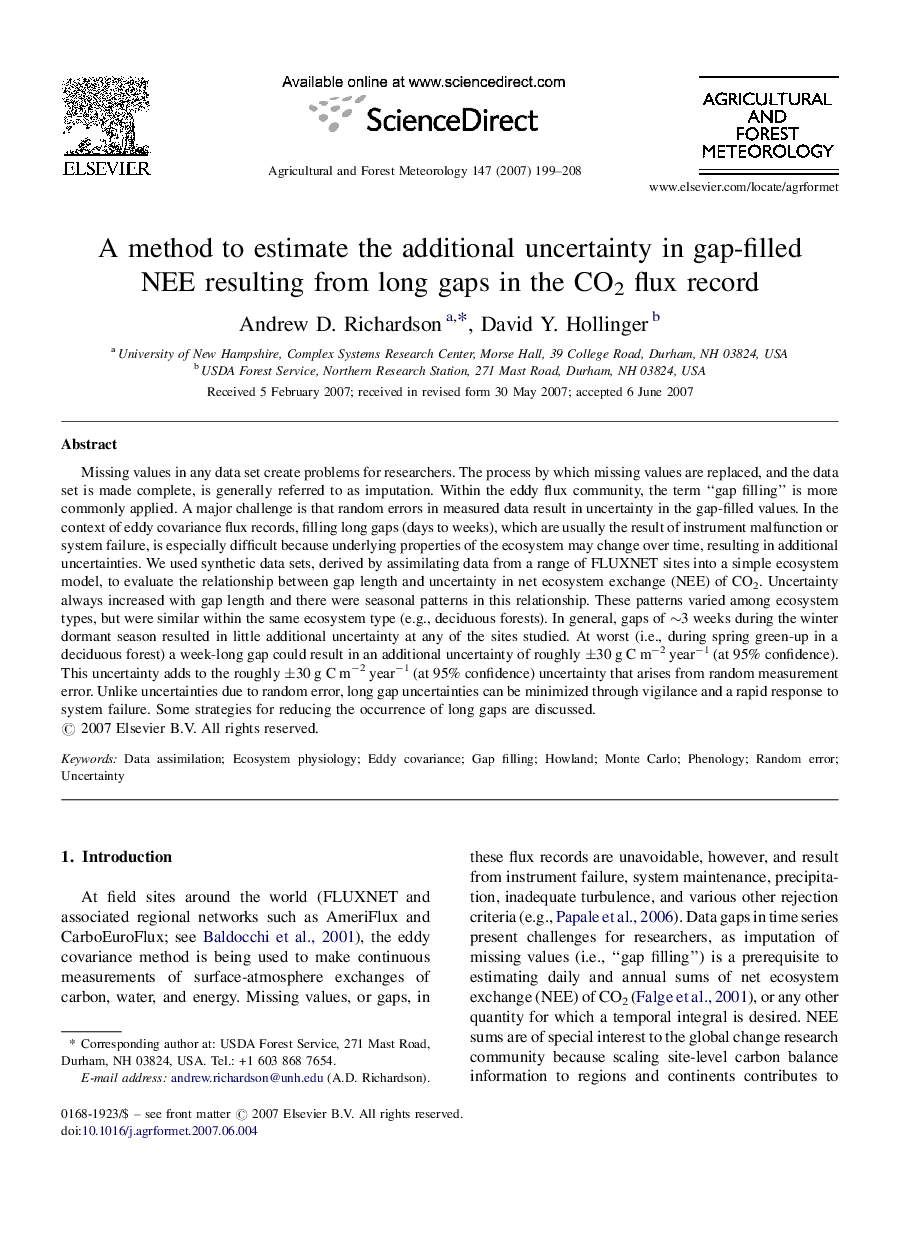| کد مقاله | کد نشریه | سال انتشار | مقاله انگلیسی | نسخه تمام متن |
|---|---|---|---|---|
| 82759 | 158414 | 2007 | 10 صفحه PDF | دانلود رایگان |

Missing values in any data set create problems for researchers. The process by which missing values are replaced, and the data set is made complete, is generally referred to as imputation. Within the eddy flux community, the term “gap filling” is more commonly applied. A major challenge is that random errors in measured data result in uncertainty in the gap-filled values. In the context of eddy covariance flux records, filling long gaps (days to weeks), which are usually the result of instrument malfunction or system failure, is especially difficult because underlying properties of the ecosystem may change over time, resulting in additional uncertainties. We used synthetic data sets, derived by assimilating data from a range of FLUXNET sites into a simple ecosystem model, to evaluate the relationship between gap length and uncertainty in net ecosystem exchange (NEE) of CO2. Uncertainty always increased with gap length and there were seasonal patterns in this relationship. These patterns varied among ecosystem types, but were similar within the same ecosystem type (e.g., deciduous forests). In general, gaps of ∼3 weeks during the winter dormant season resulted in little additional uncertainty at any of the sites studied. At worst (i.e., during spring green-up in a deciduous forest) a week-long gap could result in an additional uncertainty of roughly ±30 g C m−2 year−1 (at 95% confidence). This uncertainty adds to the roughly ±30 g C m−2 year−1 (at 95% confidence) uncertainty that arises from random measurement error. Unlike uncertainties due to random error, long gap uncertainties can be minimized through vigilance and a rapid response to system failure. Some strategies for reducing the occurrence of long gaps are discussed.
Journal: Agricultural and Forest Meteorology - Volume 147, Issues 3–4, 10 December 2007, Pages 199–208